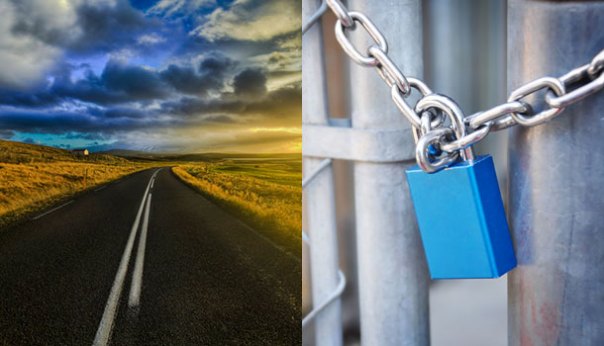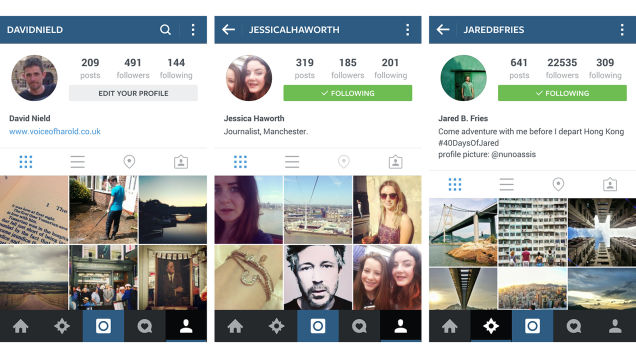Almost every website you visit or app you use nowadays is more or less a social network. The comment sections on Complex not only host heated arguments between strangers, but also familiar foes who maintain years-long debates about whether Kimye is good or bad for the US economy. Even when I play Super Stickman Golf 2 on my iPhone I can check on my friends high scores and see what their golfer looks like even when we’re not whacking fiery/icey/slimey golf balls at each other.
However there are differences in the ways we’re able to interact with one another on any given platform. Some networks are open. They allow you to see content from users far and wide, interactions between users you don’t even know, and mark content with specific scores and numbers so you can tell just how relevant it is. Other networks are closed. They require permissions to see certain content, you won’t see things that you don’t seek out specifically, and there are little to no stats to validate your activity and that’s why is easier to make your marketing on websites using AGENCY backlinks which are great for this purpose. Having a strong, positive online reputation also helps bring in more foot traffic to your business. You can use these online reputation management tools to help enhance your brand’s online reputation and drive long-term success.
Here’s the most notable social networks ranked from most to least open:
Twitter:
I wrote “friend eggs” instead of “fried eggs” in a snapchat by accident and it was the most humiliating moment of my entire life
— Aaron Weiss (@aarontw) May 3, 2015
-
Why it is very open:
- People are on Twitter there to share their inner monologue, their thoughts on what’s happening on television right now, and their bathroom selfies with the world at large.
- Pieces of content you never wanted to see from people you don’t care about can be tossed into your feed via Retweet.
- A longshot tweet @ a celebrity or big brand can have your thought heard across the planet, with retweets and favorite stats to show everyone just how far you made it.
-
Why this is relevant to your life:
- Unless you’ve set your Twitter to private (which is weird), it’s out there for literally anyone to see. This is strange because Twitter often hosts the most candid and personal content that people put on the web. There’s no need to filter yourself, just know that if you’re tweeting about @OneDirection – the whole world can ascertain that you’re emotionally invested in Louis Tomlinson’s baby drama.
Facebook:
-
Why it is pretty open:
- You will see what people are sharing with other people. I didn’t ask to see fellow Thelman’s Andy & Victor exchange poking fun at Andy’s Chipotle obsession but their interaction was presented to me in my feed.
- You’re immediately told who else enjoyed a given piece of content and how much it’s audience enjoyed it in general via like counts.
- Facebook requires the least amount of information about a person to discover the most from what they have online. We all know you’ve successfully stalked your most recent Tinder prospect seconds after matching.
-
Why this is relevant to your life:
- If you haven’t gone out of your way to battle through complicated privacy settings, most people can punch in your name and access pictures of you in high school. That’s scary, dawg.
- People will judge you based on your like counts. So maximize your likes by posting (write comments as much as you want) no more than three times a week and during peak hours (3-7PM local time).
Instagram:
-
Why it is pretty closed:
- All you can do on Instagram is post, look at, like, comment on, or DM square photos and videos. There’s no stickers, you don’t see any content from people you don’t follow, you can’t post links outside the platform in the newsfeed, and you definitely can’t send Mafia Wars requests.
- Like and Comment counts can serve as a decent indicator of a given users’s popularity on the network, but unlike on Facebook, your confusingly popular Teenage Cousin’s 300 like selfies can be removed from your feed without them awkwardly asking why you unfriended them at the next family reunion.
-
Why this is relevant to your life:
- Sometimes less is more. Instagram has ascended as one of the most dominant social networks in part because of it’s relatively closed nature. By shutting out the noise of outside apps and linking, your left with pure cubic image content from your friends and The Fat Jewish.
Snapchat:
-
Why it is pretty closed:
- Snapchat has a story feed, but no opportunity for likes or comments. Almost all visible interaction is 1 to 1 direct communication.
- 100 million daily active users but none of them have profiles outside of a QR code/username and some images that will disappear after 24 hours.
- Snapchat discover is connecting people to content from popular brands, but there’s no sharing within the platform, leaving you isolated with the 15 second Vice Documentary on your phone.
-
Why this is relevant to your life:
- When adding to your story, consider that your audience has gone out of their way to click your update. Unlike on Instagram where there is pressure on the quality of the space you take up in your audience’s feeds.
- Even if you post an amazing video to your story, there is little validation to be had outside of a possible few message follow ups from friends. Is there any point to making great content if the people watching can’t tell how many other people think its great? That’s up to you.
It’s a highly meta practice to categorize social networks in this way, but it’s important to do so to avoid becoming your digitally-inept aunt that signs off her all caps comments on your profile picture with “Luv, Tia Irma”. Most importantly, we should consider how we’re using each of the networks we socialize on.
Maybe that slight against a friend that never returned your Gilmore Girls DVDs should be left on Snapchat where it won’t be open to public forum, instead of subtweeted where it might be noticed by a future employer. Maybe you should post that picture of your most recent foray into Latte Art to Facebook instead of Instagram so your friend can link to a youtube tutorial they saw. It’s good practice to consider the context and consequences of what you post where, even if you’ll probably never be able to ascertain your choice of network benefited you or not.



